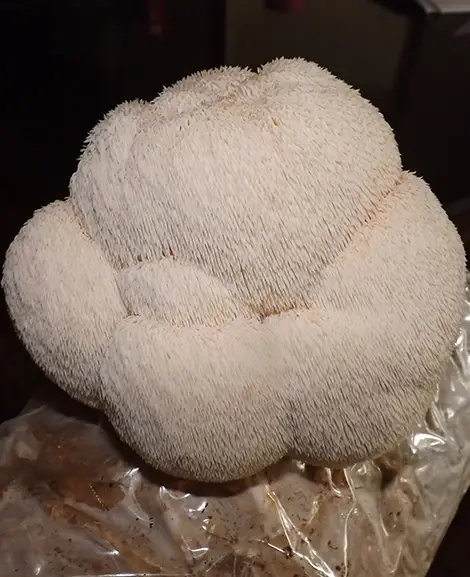A Comprehensive Guide to Growing Hericium erinaceus (Lion’s Mane, Yamabushitake)
Growing Hericium erinaceus, widely known as Lion’s Mane or Yamabushitake, is a striking medicinal and culinary mushroom prized for its unique, cascading white spines and numerous health benefits, including cognitive support and immune system enhancement. Growing this mushroom at home or commercially is an accessible and rewarding endeavor for beginners and seasoned mycologists alike. In this guide, we’ll cover everything you need to know about cultivating Lion’s Mane mushrooms, from selecting substrates to harvesting, with a focus on key terms like mycelium, spawn, fruiting, and sterilization.

Why Growing Hericium erinaceus (Lion’s Mane)?
Lion’s Mane (Hericium erinaceus) is celebrated for its fluffy, beard-like appearance and its rich, seafood-like flavor, often compared to lobster or crab. Beyond its culinary appeal, Yamabushitake has been used in traditional medicine for centuries, particularly in East Asia, for its potential to improve memory, reduce inflammation, and support nerve health. Growing your own ensures a fresh supply while allowing you to experiment with this fascinating fungi.
Understanding the Basics of Lion’s Mane Cultivation
Before diving into the process of growing Hericium erinaceus, let’s define some essential terms:
- Mycelium: The vegetative part of the mushroom, a network of thread-like structures that colonize the substrate.
- Spawn: Pre-colonized material (often grain) used to inoculate a growing medium.
- Substrate: The nutrient-rich material on which the mycelium grows.
- Fruiting: The stage when mushrooms emerge from the mycelium.
Lion’s Mane thrives in cooler temperatures (65–75°F or 18–24°C) and high humidity (85–95%), making it ideal for indoor cultivation.
Selecting the Right Substrate for Hericium erinaceus
The substrate is the foundation of successful Lion’s Mane growth. Growing Hericium erinaceus prefers hardwood-based materials, as it’s a wood-loving species. Common options include:
- Sawdust: Hardwood sawdust (oak, beech, or maple) is a favorite due to its fine texture and nutrient availability.
- Wood Chips: Larger wood pieces can be mixed with sawdust for aeration.
- Supplemented Substrates: Adding wheat bran or soybean hulls (10–20% by weight) boosts nitrogen content, enhancing yields.
Pasteurize or sterilize the substrate to eliminate competing molds and bacteria. For small-scale growers, a simple hot water bath (160°F or 71°C for 1 hour) works for pasteurization, while commercial growers may use an autoclave for full sterilization.
Sourcing Lion’s Mane Spawn
You’ll need high-quality Lion’s Mane spawn to kickstart your grow. Spawn is typically sold as grain spawn (rye, millet, or wheat colonized with mycelium) or sawdust spawn. Purchase from reputable suppliers like:
- The Spore Depot (thesporedepot.com): A trusted source for mushroom cultivation supplies.
Avoid old or contaminated spawn, as it can lead to poor colonization or failure.
Step-by-Step Guide to Growing Lion’s Mane Mushrooms
Now, let’s walk through the cultivation process for Growing Hericium erinaceus.
Step 1 – Preparing the Substrate
- Mix your chosen substrate (e.g., hardwood sawdust and 10% wheat bran) in a large container.
- Add water until the mixture reaches 60–65% moisture content—damp but not dripping when squeezed.
- Pack the substrate into grow bags or jars with filter patches for air exchange.
- Sterilize (autoclave at 15 PSI for 90 minutes) or pasteurize (hot water bath) to kill contaminants.
Step 2 – Inoculating with Lion’s Mane Spawn
Once cooled to room temperature, introduce the spawn to the substrate in a clean environment (e.g., under a laminar flow hood or in a still-air box):
- Break up the spawn into small pieces.
- Mix it evenly into the substrate at a rate of 5–10% (e.g., 50–100g spawn per 1kg substrate).
- Seal the bags or jars and label them with the date.
Step 3 – Incubation and Mycelium Colonization
Place the inoculated substrate in a dark, warm space (70–75°F or 21–24°C) for 2–4 weeks. During this incubation phase:
- The mycelium will spread, turning the substrate white as it colonizes.
- Check for green mold or foul odors, which indicate contamination—discard affected batches.
- Full colonization takes 14–28 days, depending on temperature and spawn quality.
Step 4 – Initiating Fruiting
Once fully colonized, move the substrate to a fruiting environment:
- Temperature: Lower to 65–70°F (18–21°C).
- Humidity: Maintain 85–95% using a humidifier or misting.
- Light: Provide indirect natural light or low-intensity grow lights (500–1000 lux) for 12 hours daily.
- Airflow: Use a fan to ensure fresh air exchange, preventing CO2 buildup.
Cut small slits in the grow bag where mushrooms will emerge, or remove the substrate block entirely if using a fruiting chamber.
Step 5 – Harvesting Lion’s Mane Mushrooms
Lion’s Mane fruits in 1–3 weeks after initiating fruiting. Harvest when:
- The spines (teeth) are 0.5–1 inch long and still white.
- The mushroom feels firm but not overly mature (yellowing indicates overripeness).
Use a sharp knife to cut the base, leaving some mycelium for potential second flushes. Expect 1–3 harvests per substrate block, with diminishing yields.
Optimizing Conditions for Yamabushitake Growth
To maximize success with Growing Hericium erinaceus, fine-tune these factors:
- Sterilization: Critical for preventing contamination, especially in humid environments.
- Humidity: Too low, and the mushrooms dry out; too high, and bacteria thrive.
- Temperature: Cooler conditions during fruiting encourage larger, denser fruit bodies.
Experiment with substrates and conditions to find what works best in your setup.
Common Challenges in Growing Lion’s Mane
Even with proper care, issues can arise:
- Contamination: Green mold (Trichoderma) or black spots signal failure—improve sterilization practices.
- Slow Growth: Check spawn viability or raise incubation temperature slightly.
- Small Yields: Increase supplementation or improve fruiting conditions.
Patience and cleanliness are key to overcoming these hurdles.
Authoritative Resources for Growing Hericium erinaceus
For deeper insights, consult these expert guides:
- Fungi Perfecti – Growing Gourmet and Medicinal Mushrooms: Paul Stamets’ book and website (fungi.com) offer detailed Lion’s Mane cultivation techniques.
- Link: fungi.com
- North Spore – Lion’s Mane Growing Guide: A practical resource for beginners and pros.
- Mushroom Appreciation – How to Grow Lion’s Mane: A step-by-step tutorial with troubleshooting tips.
Final Tips for Lion’s Mane Success
- Start small with a pre-made grow kit if you’re new to mycology.
- Document each step—dates, temperatures, and observations—to refine your process.
- Store harvested Lion’s Mane in the fridge for up to a week or dry it for long-term use.
Growing Hericium erinaceus—whether you call it Lion’s Mane or Yamabushitake—is a blend of science and art. With the right substrate, spawn, and conditions, you’ll soon enjoy this extraordinary mushroom fresh from your own setup.





